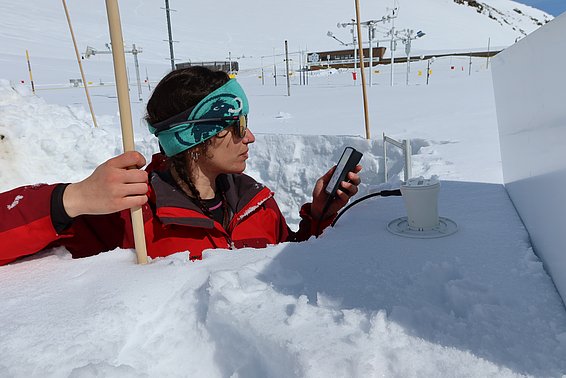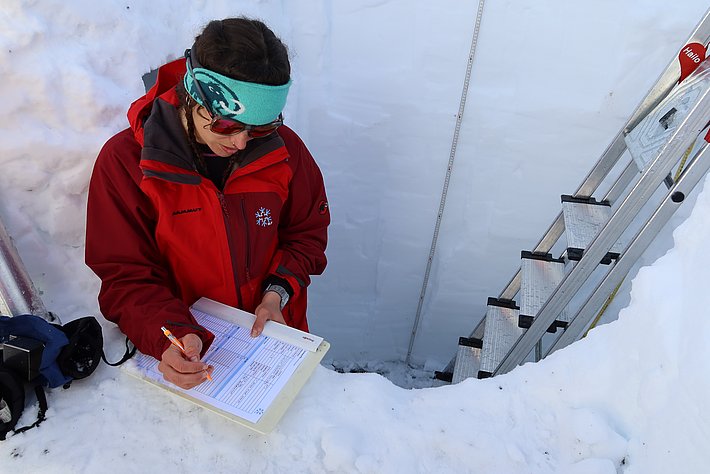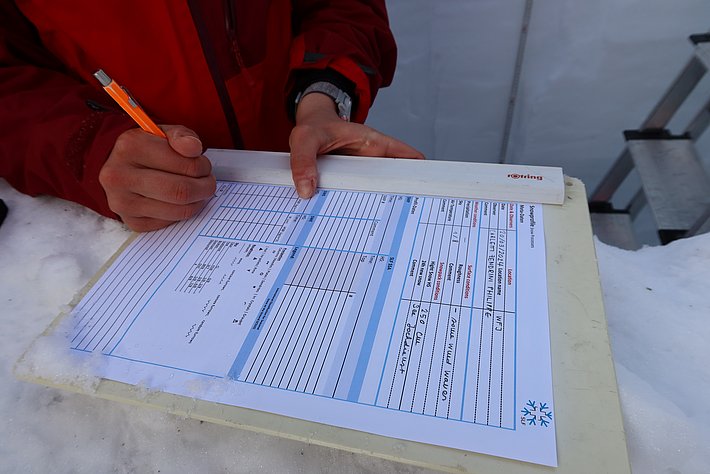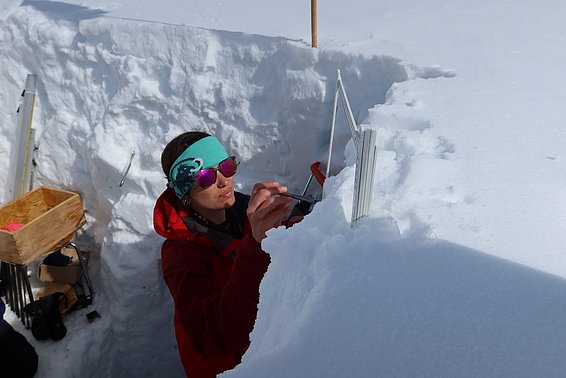04.06.2024 | Jochen Bettzieche | SLF News
SLF researchers investigate in deep holes whether satellite data accurately show snowmelt to improve hydrological discharge forecasts.
This text was automatically translated.
Francesca Carletti takes a hammer to the ground. She drives the water probe deeper and deeper into the snow to determine the snow water equivalent (SWE, see box). This is just one of the many data she is measuring on this sunny day in March at the Weissfluhjoch test site near Davos. Her goal: to develop a strategy that more accurately indicates the start and amount of snowmelt. In view of climate change, this is becoming increasingly important, explains the doctoral student at the WSL Institute for Snow and Avalanche Research SLF: "Currently, the peak of the melt is often predicted too early or too late, depending on the model."
More precise information on the start of the snowmelt and the expected amount of water is important in order to protect infrastructure and plan human activities. Parts of the economy also benefit, such as electricity producers and the agricultural sector. "It also helps with flood warnings and determining the conditions for wet snow avalanches," adds the scientist.
What is ... the snow water equivalent (SWE)?
A snowpack consists of numerous layers of more or less compressed (dense) snow. The snow water equivalent indicates how high a layer of water would be after the snow cover has melted, expressed in millimetres. Each millimetre corresponds to one litre of water per square metre of snow cover. One centimetre of fresh snow with a typical density of one hundred kilograms per cubic metre kg/m3 results in one millimetre of water. An example: in mid-April 2024, the average density of the snow cover on the Weissfluhjoch test field was 416 kilograms per cubic metre, which corresponds to a water value of around 1100 millimetres or 1100 litres of water per square metre at a snow depth of 2.7 metres.
To achieve their goal, Carletti and her colleagues dig holes and measure the properties of the snow in them. If the snow is dry, one such profile per week is sufficient. If it is wet, they dig and measure up to three times a week. On this day in March, Francesca was helped by two members of staff from other SLF research groups. The three of them spent two hours digging two and a half metres deep. In the process, they moved almost two tonnes of snow - and have to throw this mass back into the hole when Carletti has finished measuring.
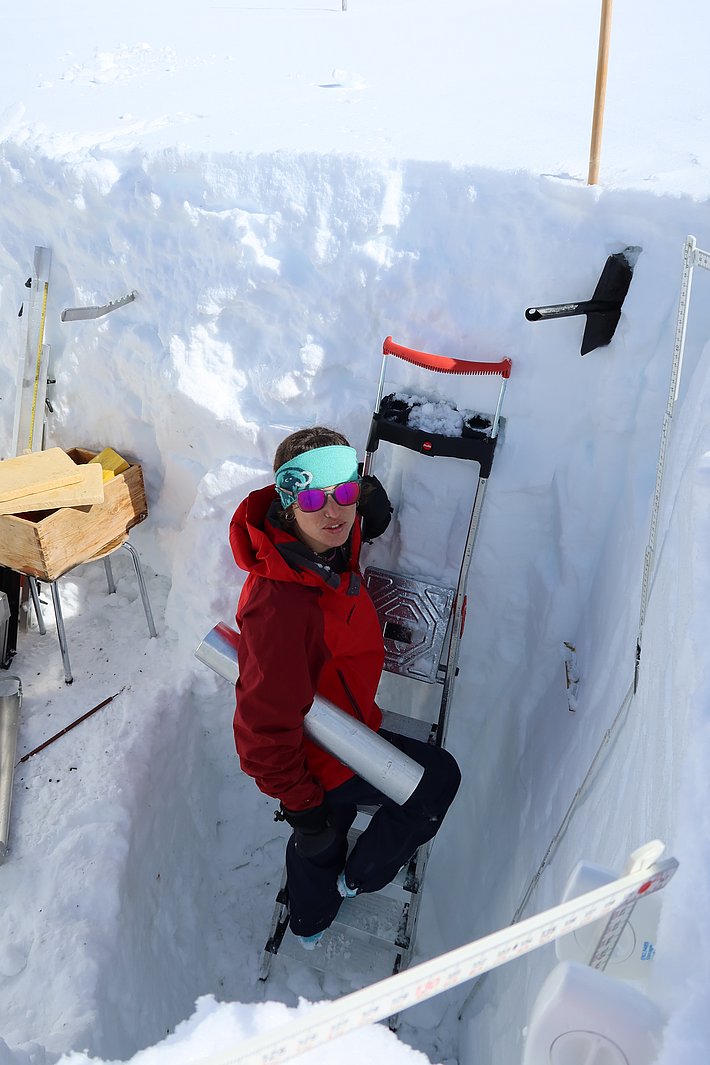
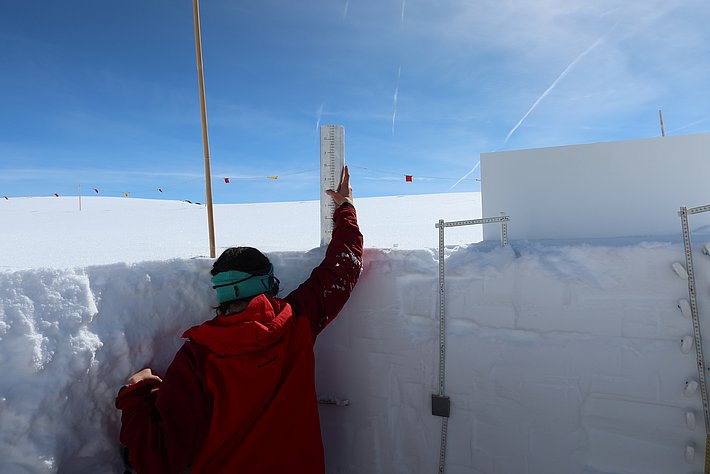
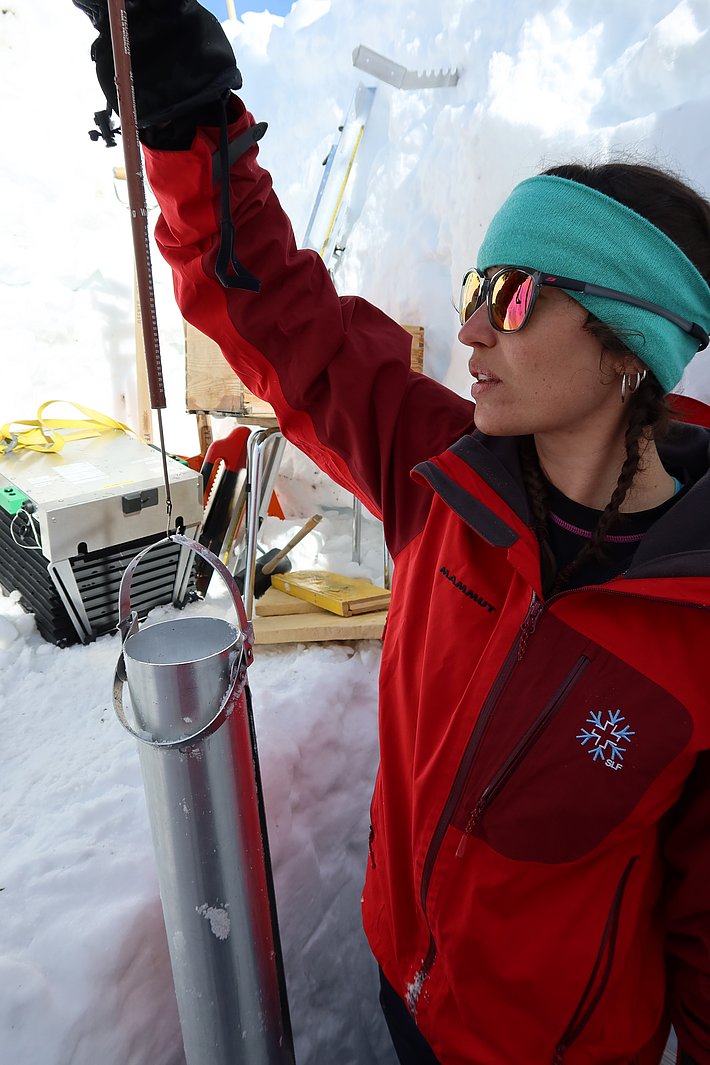
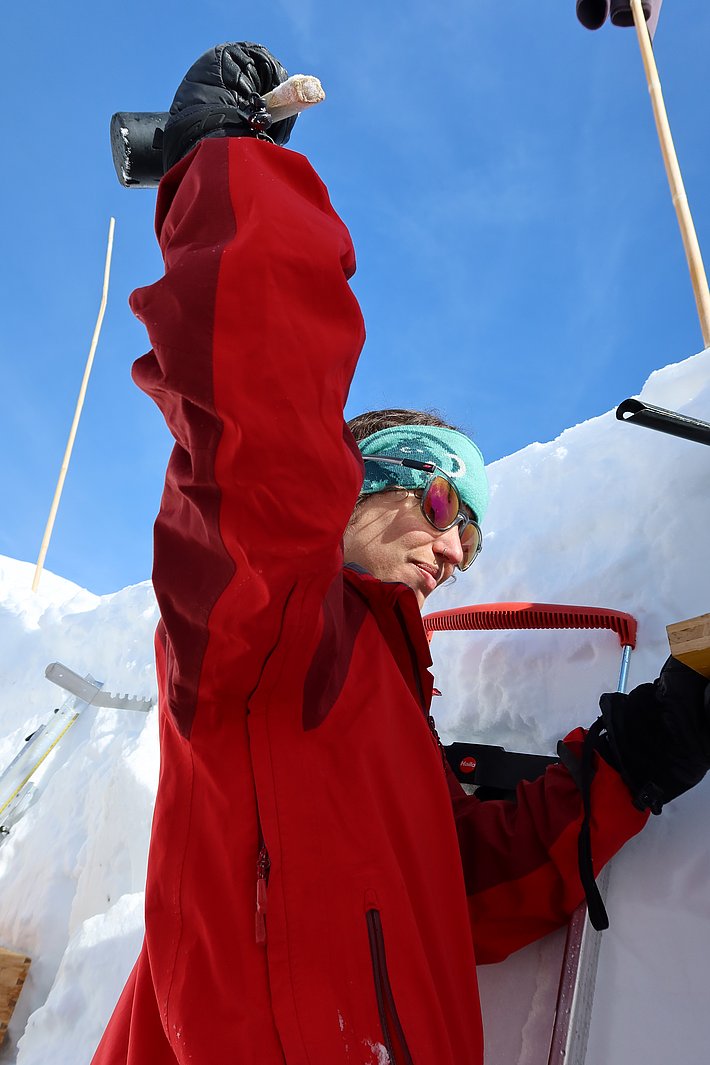
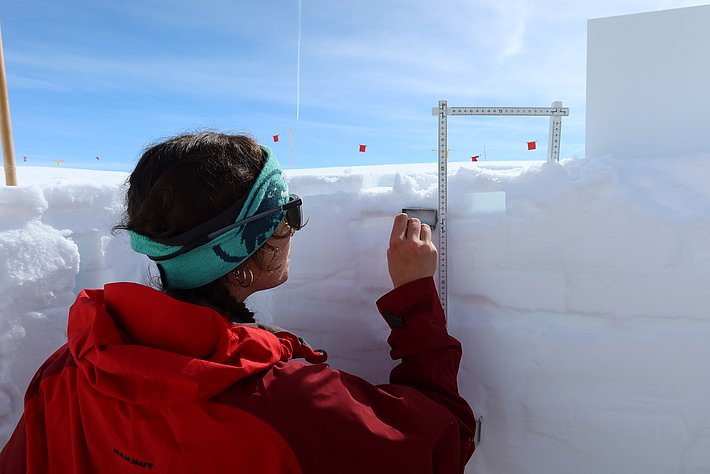
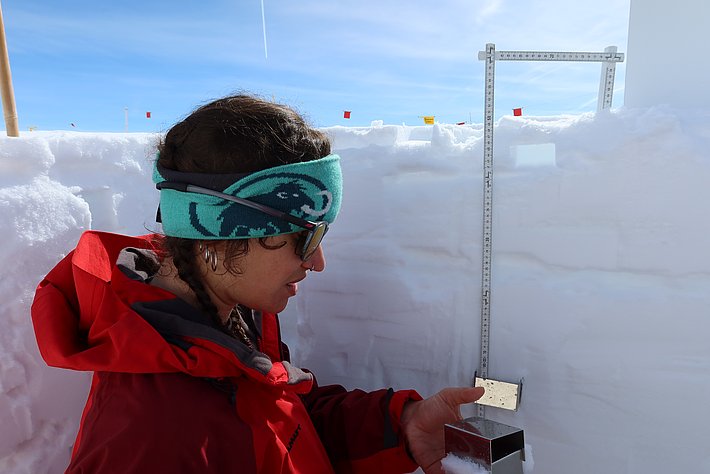

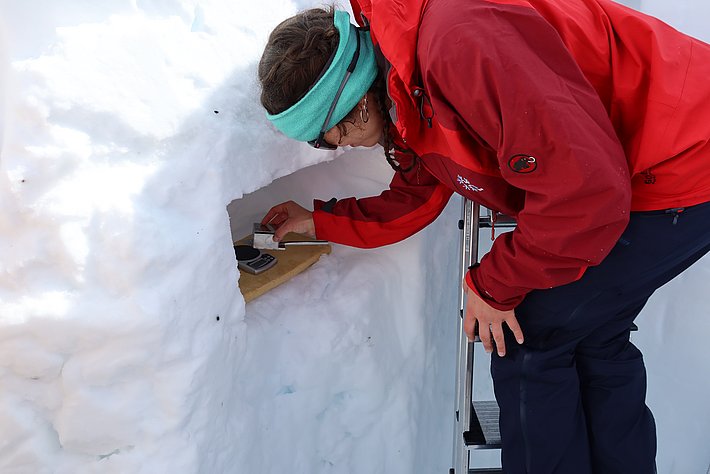
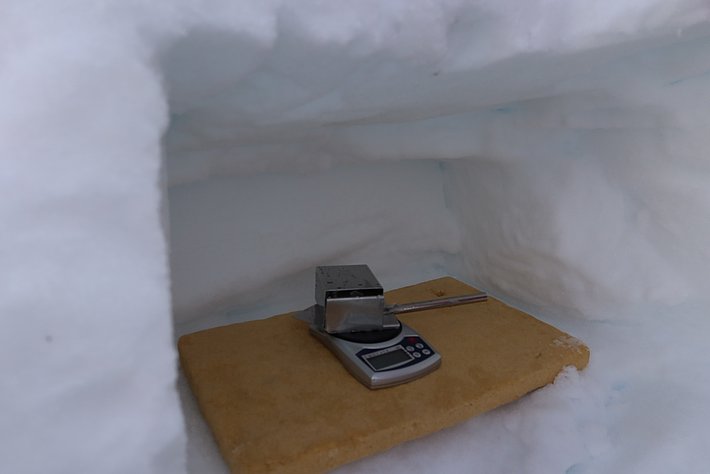
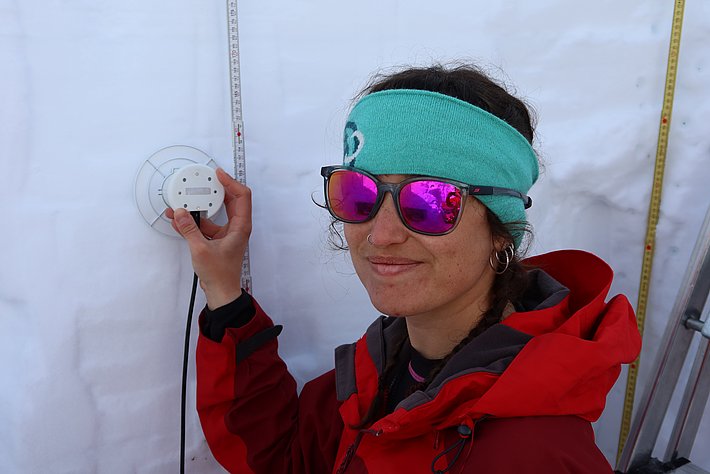
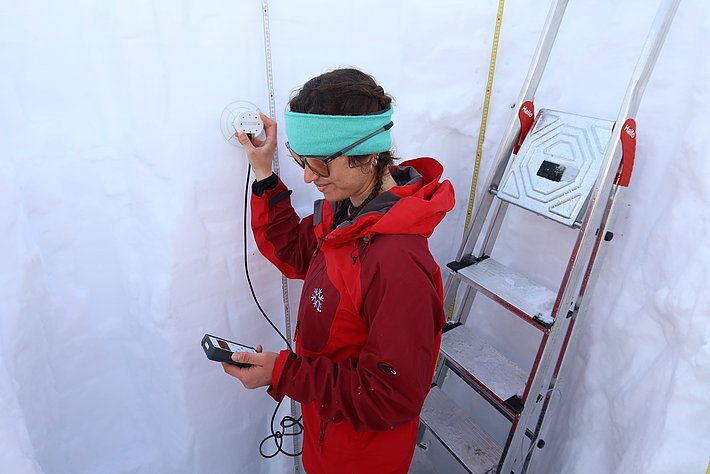
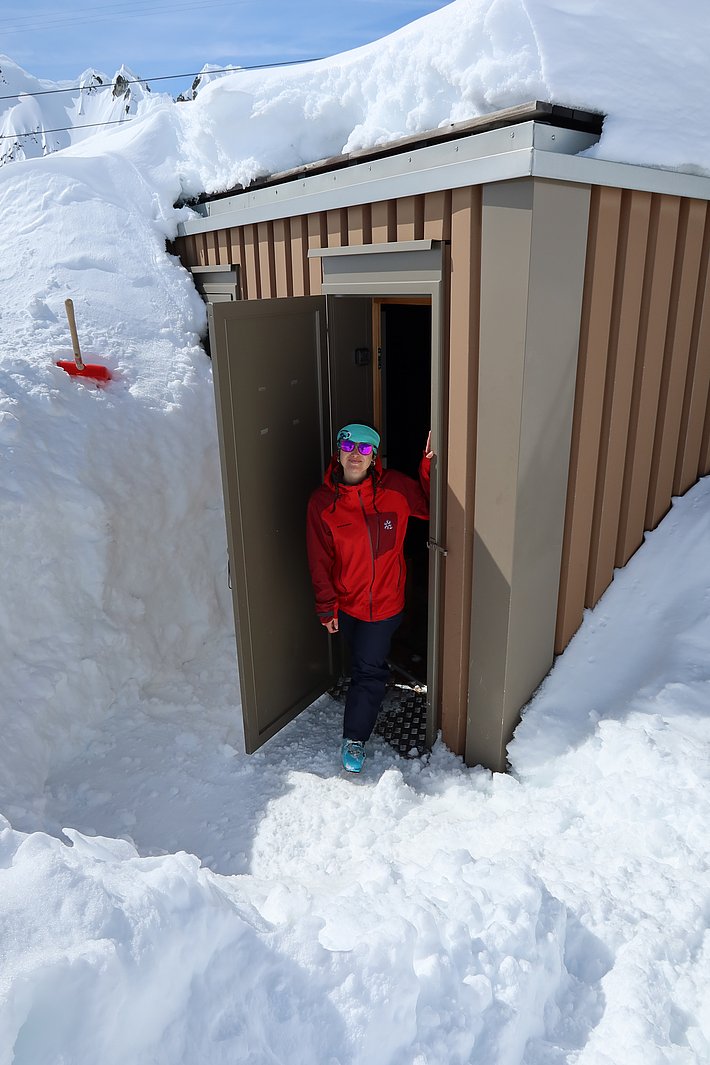

She is investigating the interaction between the moisture of the snow and the radar waves that it reflects back to the Sentinel-1 satellite. The satellite sends radar waves from its orbit to the earth's surface and measures how much of it comes back. It flies over the Weissfluhjoch test site about twice every five days. A direct correlation has been known for some time: When the snow gets wet, the intensity of the reflected waves decreases. The theory that it reaches its lowest point precisely when the liquid water content (LWC, see box) in the snow is at its highest is still comparatively new. The water then begins to run off into streams, rivers and lakes. "We want to prove this correlation," explains Carletti. If she succeeds, the satellite data could be used in future to assess water resources, not just for Switzerland but worldwide. For example, operators of hydropower plants could use this data to better plan when to fill their reservoirs.
However, Carletti still regularly stands in a deep snow hole, climbs up and down a ladder and sticks more than a dozen thermometers into the snow wall. She uses precision scales to determine the density of the snow and how it changes from the top of her hole to the bottom. For the LWC, she uses a special probe developed by technicians at the SLF, which she inserts into the snow wall at regular vertical intervals.
The winter of 2023/24 is already the second season in which she is taking measurements - and she is confident that she can prove the connection between satellite data and snowmelt processes: "So far, I have good results in terms of consistency."
What is ... the liquid water content (LWC)?
Snow consists of solid water. However, both frozen, solid and liquid water can occur simultaneously in a snow cover. The liquid water content (LWC) indicates the percentage of liquid water in a snowpack. At zero per cent, the snow is dry, a moist snow cover has a value of up to four per cent, wet snow has a value of around 20 per cent.
Contact ¶
Links ¶
- The SLF's operational snow-hydrological service (OSHD) continuously analyses the spatial and temporal distribution of snow water resources in the snowpack.
- SnowTinel
Copyright ¶
WSL and SLF provide image and sound material free of charge for use in the context of press contributions in connection with this media release. The transfer of this material to image, sound and/or video databases and the sale of the material by third parties are not permitted.
